Tristan Semiond – FUNCI
In a first article, Women and political power during the expansion of Islam, we focused on the role played by women in various spheres, especially in politics, during the period of Islamic expansion. This second article seeks once again to contribute to end the marginalization of Muslim women in history. This time we focus on the contemporary world, in which the lack of recognition continues to justify the instrumentalization and oppression of Muslim women.
Two recent events show well the consequences of the general ignorance of the role of Muslim women throughout history. The first is the reaction of Pakistan’s Islamist parties after the election of Benazir Bhutto as Prime Minister in 1988. These parties argued that no woman had ever ruled a Muslim state in history and therefore she should not be head of state. This argument was refuted in our previous article.
The second element we want to refute takes place after the anti-authoritarian protests of 2011. These mobilizations led to a change in the image of the women living in Arab countries in the eyes of Western public opinion and the media. The Arab revolutions surprised the Western world by their scale and results, but also by the significant presence of women in them. This “surprise effect” reflects the persistence of a neo-colonial view that continues to see Muslim women as passive actors in social transformations[1]. However, the fact that women are fighting for their rights and actively participating in social movements is nothing new!
Women and resistance to colonial power
In the context of the fight against the colonial powers, a woman distinguished herself for defeating the French more than once during the Algerian war of indepedence. That woman was Lalla Fatma N’Soumer.
She was born in 1830 – the same year tat the colonization began of the Algerian territory by the French troops – and she grew up in Ouerdja in a powerful and religious Kabyle family. She was only 20 years old when she decided to join the struggle against the colonial forces.[2] Her legend, as a resistance fighter, war leader and “prophetess”, began in 1854 just after the death of the Kabyle resistance leader, Cherif Bou Baghla.[3]
If she did not become head of state, the least we can say about her is that she was an incredible military and political leader, but also a religious one. On her relationship with religion, Feriel Lalami Fates a political scientist and Algeria specialist, explains:
“She came from a family that was literate and well versed in religious studies, from which she herself benefited. Something which, of course, at that time was extremely rare for women. She rejected a marriage with her cousin, taking refuge in religion, in an almost mystical attitude.” [4]
In addition to this, her victories in battles – clearly asymmetrical – against the French army, in particular in the Soumer village, made her a spiritual guide who commanded respect in both camps. Emile Carrey’s accounts of the 1857 Kabylia campaign attest to the exceptional aura that surrounded Lalla Fatma: “The sanctity of the prophetess is universally known (…) she knows (…) how to ward off all dangers, and can, if she pleases, turn back the French invasion!”[5]. The respect for the figure of Lalla is strengthened through the fact that many of her enemies called her the “Joan of Arc of Djurdjura” [6].
In spite of this, unfortunately, in 1857 the French army conquered the Djurdjura Kabylia and the heroine of the Kabyle resistance was imprisoned. She finally died in prison at the age of 33 in 1863 in Ben Slimane.
Even though her name is now a symbol of the resistance to colonization and of Algerian feminist movements, the figure of Lalla was forgotten for more than a century. The rehabilitation of her legend has been the result of the efforts of Algerian feminists in the 1990s, according to Feriel Lalami Fates: “Algerian feminists introduced her back into Algerian history, and it is thanks to this work that, in 1995, her remains were transported to El Alia, the cemetery of Algeria’s national heroes”[7]. Since then, tributes have proliferated, whether through statues, films, songs or symbolic acts such as the naming of streets or schools….
“Algerian feminists introduced her back into Algerian history, and it is thanks to this work that, in 1995, her remains were transported to El Alia, the cemetery of Algeria’s national heroes”
In Algeria, women not only actively participated in the battles to prevent colonization, but also took important part in the war of national liberation. The “mujahideen” (women combatants during the war of liberation) are very numerous and many have become symbols of resistance and martyrdom. The victory of this national struggle would not have been possible without them, as they played different roles during the war. It is difficult to single out one figure above the rest, but, for the purpose of this article, we will speak of Zoulija Oudai as she holds the title of “mother of martyrs.” [8]
The execution of her husband and son by the colonial army was one of the reasons for her commitment to the Algerian independence. Her dedication was so strong that she was quickly appointed head of the FLN (National Liberation Front) in the Cherchell region, participating in intelligence operations and in bringing the FLN closer to the population. She also financed many of their actions and, when the Cherchell region network was dismantled in 1957, she joined the Maquis. The French army ambushed her in the Oued Haïzer, where she was arrested on October 15, 1957 and tortured for ten days. She was finally assassinated, thrown from a helicopter by French soldiers, after refusing to divulge secret information. Today, she rests in peace in the cemetery of the “Chouhada” (martyrs) of Menaceur.
Nationalist women in a context of decolonization
Through their presence in nationalist movements, women began to occupy a greater public and political space in many Arab countries. In Egypt, for example, they played an important role in the 1919 revolution against British colonization [9]. On March 14, 1919, in Cairo, Hamida Khalil was hit by a British bullet and became the first woman martyr to the national cause. Two days after her death, a hundred women of high society gathered to demonstrate against the British domination [10]. Among them, a woman who would have a great importance in the events of the country, Huda Sharawi.
Huda Sharawi began her activism in the public space in 1908 by founding a dispensary for poor women and a school to improve the family environment.[11] Her social commitment quickly became political after attending a women’s demonstration for the right to vote in France. She then decided to create the Intellectual Association of Egyptian Women in 1914, with the goal of adapting feminist struggles to the Egyptian society.[12]
The events of 1919 brought a new change in her commitments, which also became nationalist. In fact, she came to play a key role in the nationalist party, the Wafd, created that same year. First through her vice-president and husband Ali Sharawi, and then through her direct action. On January 12, 1920, she created the Wafd Women’s Central Committee, which she chaired for two years.
However, after several of her demands were rejected by party leaders during negotiations with the British, Huda distanced herself from the Central Committee and especially from the Wafd.
Among her reasons for distancing herself from the party we can highlights the nationalists’ rejection of women’s suffrage, an issue that held a special place for her. A letter written by Huda to party leader Saad Zaghlul illustrates her thinking:
“[…] At this time when the Egyptian question is about to be settled, it is manifestly unjust that the Egyptian Wafd, which defends the rights of Egypt and fights for its liberation, can deny half of the nation of its rightful share in this liberation.” [13]
She then decided to continue fighting for her ideas and for this excluded half of the nation, creating the Egyptian Feminist Union (EFU) in 1923, holding its presidency until her death in 1947. The aim of the organization was to defend women’s rights and it was characterized by close relations with international feminist organizations such as the International Woman Suffrage Alliance [14]. Her ambitions led her to leave Egyptian nationalism for an Arab nationalism, in which she would also have an important role. In December 1944 she organized the first Arab Feminist Congress for “the construction of a true citizenship for men and women in the Arab states liberated from the yoke of colonization.” [15] However, her ideas and proximity to Western feminist ideas, illustrated, for example in her decision to remove her veil at the Cairo train station in 1923, were the reason for much criticism at the time.[16]
The status of women was an important issue at that moment in Egypt and gave rise to many debates. Without making a comprehensive analysis of these ideas, we can highlight several currents of thought, driven by different women: on the one hand, a progressive current close to Western ideas that we have just seen with Huda. On the other hand, another current represented by Malak Hifni Nasef, who fought for the improvement of the status of women within the framework of religion and the customs of society. [17] Malak developed a feminist voice different from that of Huda, which combined elements of Westernization and others from the Arab-Islamic tradition.[18]
Finally, there was another more rigorist and traditional current represented by Zainab al-Ghazali. In 1936, al-Ghazali created the Muslim Women’s Association, whose mission was to encourage Muslim women to incorporate Islam into their daily lives, because, according to her, “Islam has provided everything to both men and women. It has given women everything: freedom, economic rights, political rights, social rights, public and private rights.“[19]
Through their presence in nationalist movements, women began to occupy a greater public and political space in many Arab countries.
Al-Ghazali insisted that women should play an active role in the public, intellectual and political spheres if they desired so, provided that such activities did not interfere with a woman’s responsibilities to her own family. She was also very committed to nationalism and supported the 1952 revolution. However, her political activities and her opposition to the Egyptian government after the dissolution of the Muslim Brotherhood in 1964 led to her arrest and imprisonment in 1965.
Egypt was not the only country in which women began to have more power in the public space. In the Mashreq and the Maghreb, as well as in Turkey, many women mobilized for the independence of their country and, learning from these mobilizations, began to defend their rights. This struggle continued after independence, but most of these movements were gradually absorbed by the State, limiting women’s action to the world of associations. Thus, they were generally excluded from decision-making positions and political power despite the importance they had played in the national liberations. Unfortunately, this is not a particularity of the countries of Islamic tradition, but a global reality.
Women heads of state in Muslim countries
Despite this, many of the great Western democracies such as France or the United States have never had a female head of state, while in some Muslim countries women have indeed come to hold this position.
Benazir Bhutto, mentioned in the introduction, is a case in point. In the 1990s she became the first woman head of state elected in a Muslim country, Pakistan, and opened the door to others. However, it should be remembered that her term in office was widely criticized, and she was accused of corruption several times.
Khaleda Zia was the second woman to become prime minister in a Muslim country after Benazir Bhutto, in Bangladesh where she ruled twice (1991-1996 and 2001-2006). After her first term, women continued to occupy political power positions in the country, especially with the current prime minister, Sheikh Hasina, who is also the daughter of the country’s first president. Sheikh Hasina won the elections twice: the first time right after Khaleda’s first term in 1996, and the second time in 2008 when she won a landslide victory in the elections, despite having been arrested and charged with extortion in 2007.
In 1997, in Turkey, Tansu Çiller followed in the footsteps of Benazir, Khaleda and Sheikh Hasina as the first woman to be appointed prime minister of her country, although her life was also marked by many controversies and accusations of corruption.
In the world’s most populous Muslim country, Indonesia, stands out the figure of Megawati Sukarnoputri, who served as vice president from 1999 to 2001 and was appointed president of the Republic from 2001 to 2004. Also in 2001, in Senegal, a country characterized by its cultural and religious diversity, Mame Madior Boye was also the lead the government’s office. At the end of her term, she was appointed special representative to the African Union for the protection of civilians in countries under armed conflict.
More recently, in 2010 after the April revolution that deposed President Kurmanbek Bakiyev in Kyrgyzstan, Roza Otunbayeva was sworn in as president of the country with the objective to pacify an explosive situation. A year later, in Kosovo, Atifete Jahjaga also broke the glass ceiling by serving as the fourth president of the newly Republic of Kosovo between 2011 and 2016.
We will end this list with Samia Suluhu Hassan, who this March became the first woman president of Tanzania after the death of President John Magufuli. According to the Tanzanian Constitution, the new president, a Muslim and a native of the semi-autonomous archipelago of Zanzibar, must remain in power until the end of the deceased president’s term, which will come in 2025. This unprecedented event makes Samia a reference figure in feminism and politics and surpasses another personal best, as Samia had already made history in her country by establishing herself as Tanzania’s first women vice president in 2015.
These stories, as well as many recent works, demonstrate and make visible the importance of women in social transformations in Muslim countries. For the Western world, Muslim women’s mobilizations in civil society seem to be a new phenomenon, however, they are the result of centuries of fight and are part of a historical process.
is a perfect illustration of this continuation of struggles. At the age of 20, Bouhired joined the FLN and later the Fedayeen (armed militants), with whom she participated in the guerrillas against the French settlers. For this reason, she was arrested and tortured and, after her release, her struggle and courage were honored by key personalities in the region. However, after Algeria achieved independence, she was deliberately removed from the political scene by her (ex)fellow FLN members.
Nevertheless, Bouhired never gave up fighting and, still exasperated by the injustice of patriarchy, she continues up to this day to vindicate the position of women in the liberation of Algeria. She also participates in the Hirak protests in Algeria, where her words, full of experience, are very much heard: “Our blood is the same as the blood of men. Our blood is not water. Our blood is blood.”[20]
Bouhired, like many others, symbolizes these centuries of women’s battles in social movements, which unfortunately are still too often forgotten… Through this article we have tried to recover their struggles, their ideas and their stories, as models of effort and inspiration, and as examples to reject patriarchal readings of these countries’ History, which sustain Islamophobia and essentialization of Muslim women.
[1] Mahfoudh, Amel, et Christine Delphy. « Entre dictatures, révolutions et traditions, la difficulté d’être féministe au Maghreb », Nouvelles Questions Féministes, vol. vol. 33, no. 2, 2014, pp. 4-12.
[2] Elsa Mourgues. « Lalla fatma N’Soumer, la résistante kabyle », France Culture [En linea], 24/02/2020
[3] Ouissal Harize. « From militants to student activists: The women who fought for Algeria », Middle East Eye [En linea], 03/07/2020
[4] Elsa Mourgues. « Lalla fatma N’Soumer, la résistante kabyle », France Culture [En linea], 24/02/2020
[5] Ibid
[6] Ouissal Harize. « From militants to student activists: The women who fought for Algeria », Middle East Eye [En linea], 03/07/2020
[7] Elsa Mourgues. « Lalla fatma N’Soumer, la résistante kabyle », France Culture [En linea], 24/02/2020
[8] Ouissal Harize. « From militants to student activists: The women who fought for Algeria », Middle East Eye [En linea], 03/07/2020
[9] Nora Semmoud, Gülçin Erdi Lelandais, Safaa Monqid. “ Femmes, droits et participation citoyenne au Machrek, au Maghreb et en Turquie ”. Genre, féminisme et développement. Une trilogie en construction, Les presses de l’Université d’Ottawa, 2019
[10] Dayan-Herzbrun, Sonia. « Féminisme et nationalisme dans le monde arabe », Fatou Sow éd., La recherche féministe francophone. Langue, identités et enjeux. Karthala, 2009, pp. 243-253
[11] Sonia Dayan-Herzbrun, « Féministe et nationaliste égyptienne : Huda Sharawi », Mil neuf cent, n°16, 1998, p.64.
[12] Ibid. p. 66
[13] Sonia Dayan-Herzbrun. « Féminisme et nationalisme dans le monde arabe », La recherche féministe francophone. Langue, identités et enjeux. Paris, Éditions Karthala, « Hommes et sociétés », 2009, p. 247
[14] Margot Lefèvre. « Huda Sharawi (1879-1947) », Les clés du Moyen-Orient [En linea], 09/11/2020
[15] Sonia Dayan-Herzbrun, « Féministe et nationaliste égyptienne : Huda Sharawi »,p. 73.
[16] Margot Lefèvre. « Huda Sharawi (1879-1947) », Les clés du Moyen-Orient [En linea], 09/11/2020
[17] Nora Semmoud, Gülçin Erdi Lelandais, Safaa Monqid. “ Femmes, droits et participation citoyenne au Machrek, au Maghreb et en Turquie ”. Genre, féminisme et développement. Une trilogie en construction, Les presses de l’Université d’Ottawa, 2019
[18]Leila Ahmed, Women and gender in Islam : historical roots of a modern debate, New Haven, Connecticut, Yale University Press, 1992, 296 p.
[19] Ibid. pp.197-202
[20] Ouissal Harize. « From militants to student activists: The women who fought for Algeria », Middle East Eye [En linea], 03/07/2020

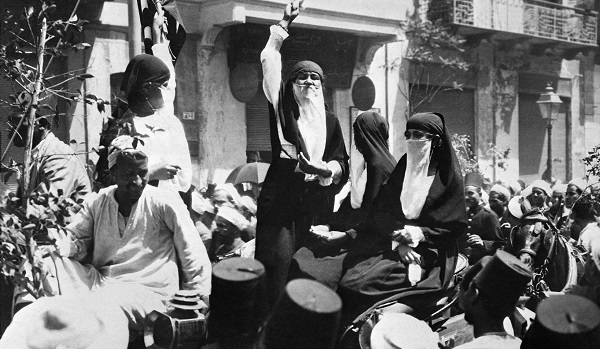
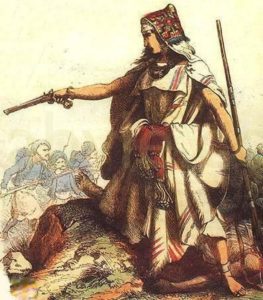
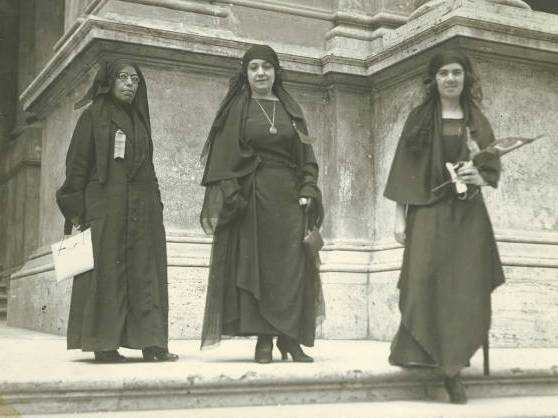
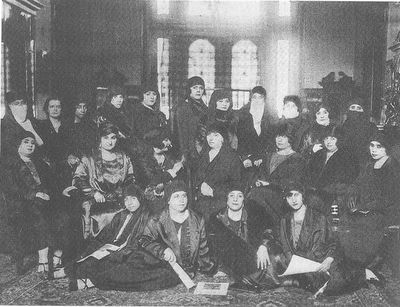
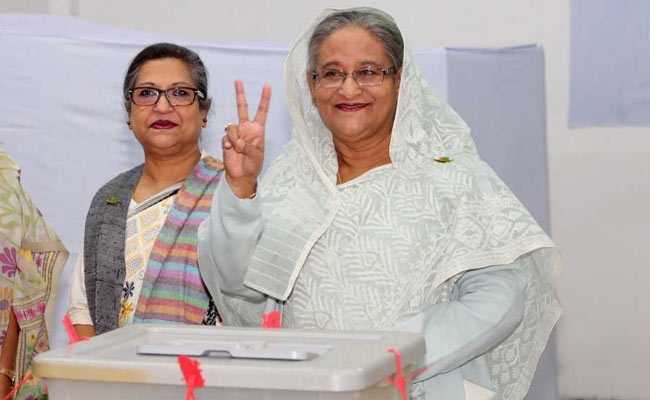
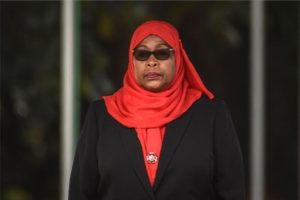


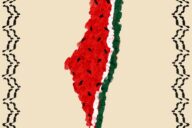











No Comments